The high hardness and complex distribution of gold particles in rock gold ore often make it difficult for traditional gold processing equipment to efficiently recover gold. Compared to placer gold, rock gold processing requires multiple complex steps, including crushing, screening, grinding, gravity separation, and flotation, leaching(CIP/CIL), etc. In rock gold mining projects, the selection of processing equipment directly determines ore recovery and operating costs. This article focuses on the characteristics of rock gold ore and details the key types of rock gold processing equipment to help mining companies avoid selection errors and achieve efficient gold extraction.
In rock gold mining projects, appropriate crushing and grinding equipment ensures the optimal disaggregation of the ore. Screening equipment and spiral classifiers are central to particle size control in rock gold processing plants. Precision separation equipment (gravity separation, flotation, CIP/CIL) captures micron-sized gold particles, while advanced smelting systems ensure the ultimate purity.
Why do rock gold mining projects require specialized equipment?
The fundamental difference between rock gold and placer gold stems from the mineralization environment. Placer gold is loose ore deposited on riverbeds after weathering, transportation, and subsequent transport. Rock gold, on the other hand, is embedded in hard primary rock, presenting a vastly different processing challenge. Because rock gold ore typically has a Mohs hardness of 6-8, comparable to steel (Mohs 5.5), it requires high-intensity crushing equipment for effective separation. Gold in rock gold deposits is often encased in hard quartz veins or sulfides. Under a microscope, gold grains are covered by multiple layers of mineral shells, requiring fine grinding to a mesh size of 200 or less to expose the gold particles.
However, the low-intensity crushing and single gravity separation process of placer gold equipment is completely inadequate for the separation of rock gold. Therefore, for rock gold, specialized crushing, grinding, and sorting systems are essential for effective precious metal recovery.
Best Rock Gold Processing Equipment Solution
1 . Crushing Equipment: Breaking Down Hard Rock Ore
(1) Jaw Crusher – The First Choice for Primary Crushing of Hard Rock
The jaw crusher is the preferred choice for processing hard rock gold ores. Its high-strength structure and efficient crushing capacity make it a core component of gold ore pre-processing. This equipment features a “V”-shaped crushing chamber design, allowing precise control of crushed particle size by adjusting the discharge opening. It is particularly suitable for processing high-hardness gold ores (Mohs 6-8), such as quartz vein or sulfide deposits.
(2) Hammer Crusher, Cone Crusher, Impact Crusher, Roll Crusher – Medium and Fine Crushing Expert
- Hammer Crusher: For oxidized gold ores with moderate hardness (Mohs 4-6), the hammer crusher is the preferred choice due to its high throughput and flexibility. This crusher uses high-speed rotating hammers to impact the ore, achieving a reduction ratio of 10-20. Its low price makes it suitable for small to medium-sized rock gold projects.
- Cone Crusher: Thanks to its laminated crushing principle, it efficiently processes hard rock (such as gold-bearing granite) and produces a uniform product size. Commonly used for secondary or tertiary crushing in high-capacity, large-scale rock gold mining projects, it provides an ideal feed for grinding.
- Impact crushers primarily use hammers on high-speed rotors to impact the material, achieving crushing through multiple collisions between the material, the impact plates, and each other, resulting in a superior product particle size. They offer a wide range of feed size adaptability and high compressive strength, making them suitable for the crushing stage of small and medium-sized handling medium-hard ores plants such as limestone and sandstone gold mines.
- Double-roll crushers: Using two counter-rotating rollers to squeeze the material, they are suitable for fine or ultra-fine crushing. The product particle size can be adjusted by adjusting the gap between the rollers. They are suitable for the fine or ultra-fine crushing stages of small and medium-sized rock gold mining operations.
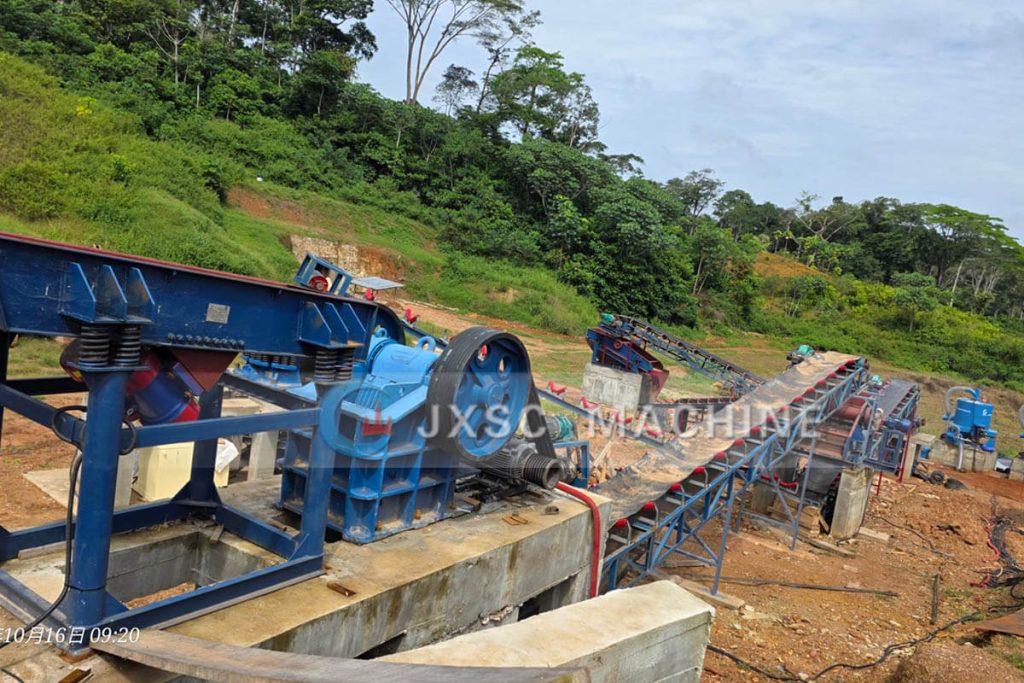
2. Screening Equipment – Product Size Classification
Crushed/ground ore is graded by particle size using multiple screens. Screening equipment plays a key role in the rock gold processing process and is an essential step, directly impacting beneficiation efficiency and recovery rates. It is widely used in pre-processing to remove waste rock, grade ore before grinding, and grade concentrates/tailings after separation.
3. Grinding & Classification Equipment: Achieving Ore Liberation
(1) Ball Mill – Ideal for Large-Scale Continuous Operations
Ball mills achieve deep disaggregation of rock gold ore through the impact and grinding of steel balls. They are core equipment for projects with daily processing capacity exceeding 100 tons. They are categorized by discharge method: grate-type mills are suitable for coarse grinding, producing a product size of 200-325 mesh; overflow-type mills are suitable for fine grinding, achieving a particle size of up to 400 mesh. Their linings are made of high-chromium cast iron to resist abrasion from hard ore.
(2) Wet Pan Mill – The Gold Standard for Small-Scale, Low-Cost Production
Wet pan mills feature an integrated “grinding + compaction” design, making them particularly suitable for small gold mines with a daily processing capacity of less than 50 tons. Consisting of a cast iron platen and two to three rollers, the equipment wet-grinds the ore through rotation and revolution, achieving a product fineness of 150-200 mesh. Gravity settling is also used to initially separate free gold. Amalgam can also be added to concentrate gold particles. While this method offers low investment costs, it’s important to note that it’s more effective at recovering gold particles larger than 0.5mm. Fine gold particles require gravity separation equipment.
(4) Spiral Classifier – Precisely Controls Grinding Product Particle Size
Slurry classification is achieved primarily through the synergistic effect of gravity settling and spiral conveying. Within the inclined trough, the ground slurry is driven by water flow, causing fine particles to overflow from the upper portion of the trough. Coarse particles (sand) are conveyed upward by spiral blades to the discharge outlet, where they return to the ball mill for further grinding, forming a closed “grinding-classification” cycle. This classifier is particularly suitable for processing rock gold ores with high mud content and unevenly distributed gold particles.
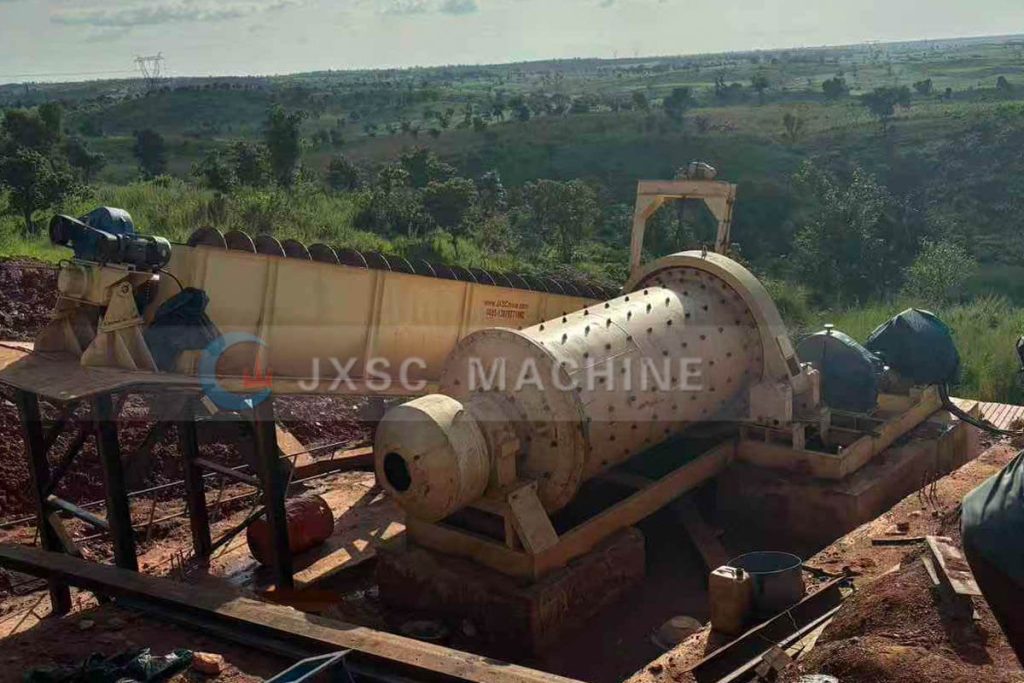
4. Separation Equipment: Recovering Gold from Ore
(1) Gravity Separation Equipment (Gravity Separation Equipment)
Shaking Table – Accurately recovering free gold particles
The shaking table achieves efficient separation of gold particles and gangue through asymmetric reciprocating motion and inclined water flow. Its working surface is paved with wear-resistant rubber, and the bed height gradually decreases from the feed end to the discharge end. Gold particles are deposited in the concentrate area of the bed due to their high density, while tailings are discharged from the lower end with the water flow.
Gold Centrifugal Concentrator – An efficient solution for processing fine gold
The gold centrifugal concentrator uses centrifugal force to accelerate the sedimentation and separation of fine gold particles, making up for the shortcoming of traditional gravity separation equipment in low recovery rate of fine gold particles. It has strong adaptability to rock gold ores with high mud content, and concentrate can be obtained after one separation. It is particularly suitable for processing old tailings re-selection projects or the selection section of high-grade fine gold particles.
Usually, to improve the recovery rate of fine gold particles, a “shaking table-centrifuge-cluice box” combined process can be adopted.
(2) Flotation Equipment (Flotation Equipment)
Mechanical flotation machine and aeration flotation machine
Mechanical flotation machine relies on the rotor-stator system to generate bubbles, which is suitable for processing high mud content, coarse-grained sulfide rock gold, and difficult-to-separate ores. Aeration flotation machine is supplied with air through an external air compressor, and the bubbles are finer and more uniform, which is more suitable for the flotation stage of fine-grained gold and easily oxidized ores. According to the characteristics of gold ore or sulfide gold ore, the two can be considered to form a “roughing + concentrating” two-stage flotation process. The mechanical method is used in the front stage to ensure the recovery rate, and the aeration method is used in the back stage to improve the concentrate grade, thereby comprehensively improving the gold flotation tech recovery rate.
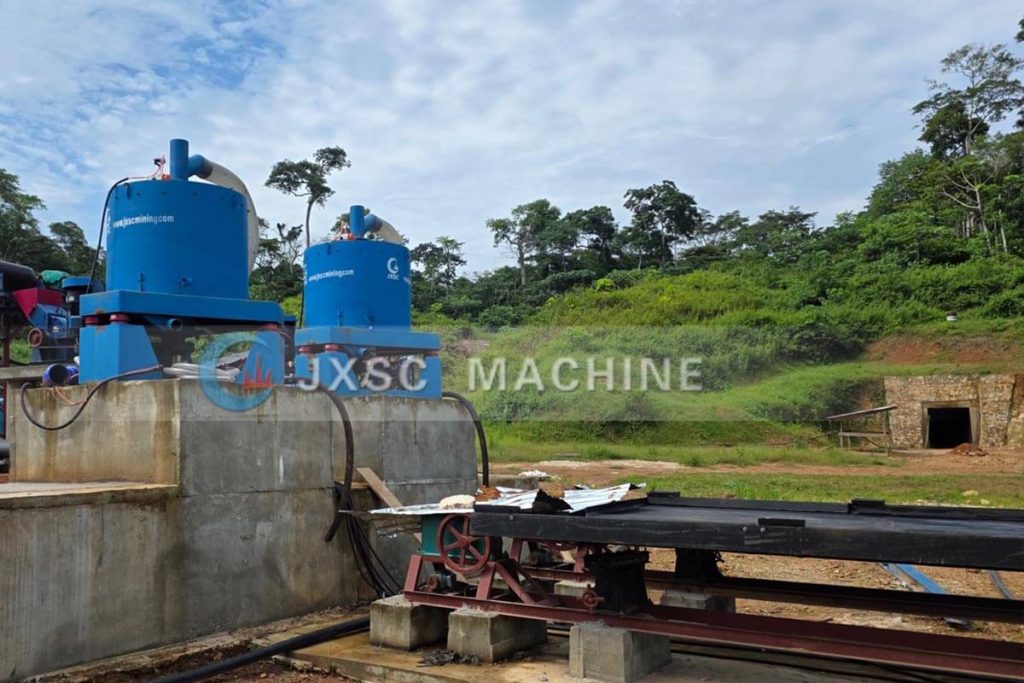
(3) Cyanidation Equipment: Extracting Fine Gold
CIP/CIL System
CIP (carbon-in-pulp process) and CIL (carbon-in-leach process) are the mainstream cyanidation processes for extracting gold from rock gold. Their automated control systems can significantly improve production efficiency. The CIP system separates leaching and adsorption into two separate units. A PLC controls the sodium cyanide concentration, pH value, and stirring speed in the leaching tank to ensure a gold leaching rate of >95%. The CIL system performs both leaching and carbon adsorption within the same tank, reducing slurry transportation and achieving a higher level of automation.
The main equipment includes the stirred cyanide tank and the carbon-in-leach adsorption tower. The stirred cyanide tank uses mechanical agitation to ensure full contact between the cyanide solution and the milled slurry, achieving dissolution and leaching of fine gold particles. It is also the core gold extraction equipment for high-grade rock gold ore. The carbon-in-leach adsorption tower integrates cyanide leaching and activated carbon adsorption into a single process, eliminating the solid-liquid separation step in traditional processes and significantly improving gold extraction efficiency.
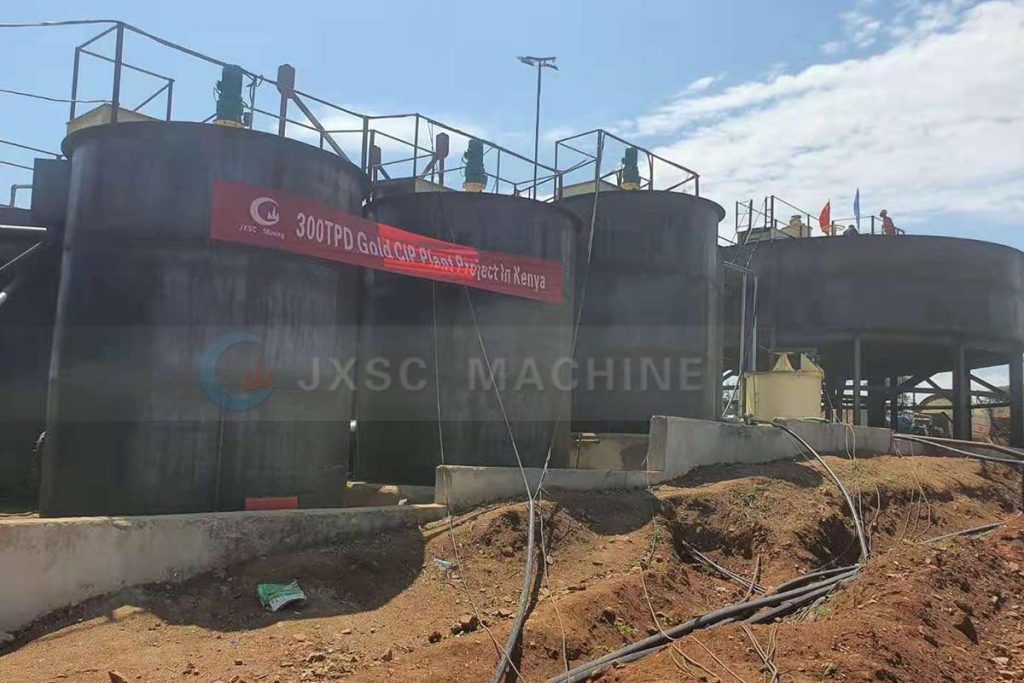
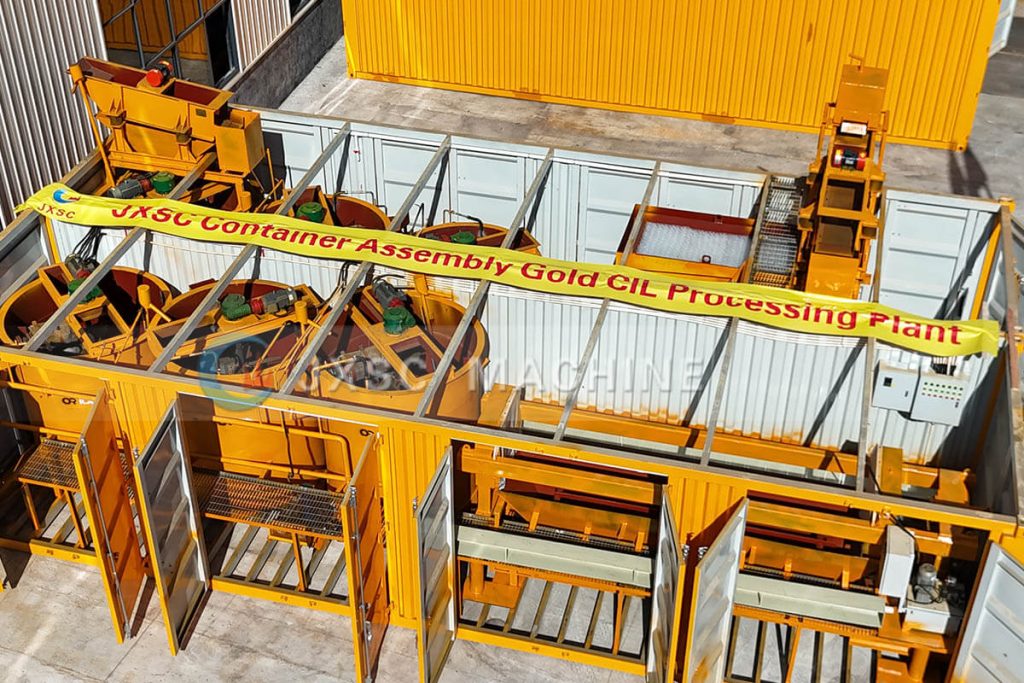
5. Smelting Equipment
JXSC offers four induction melting furnace options, all of which utilize electromagnetic stirring to achieve deep gold purification, resulting in gold bars or nuggets with purity reaching 99.99%.
6. Tailings Processing System
A dry discharge system consisting of a high-efficiency thickener, dewatering screen, filter press, and other dewatering equipment can be configured as needed to reduce the moisture content of the tailings to below 20%. The dry tailings can be used to fill mined-out areas or make bricks, reducing the footprint of the tailings pond.
Best rock gold processing equipment is central to a successful mining project. Small and medium-sized rock gold mining projects prioritize modular mobile equipment to shorten commissioning cycles. Large-scale mines, on the other hand, require customized solutions for the entire crushing, grinding, gravity separation, and flotation/leaching process. Tailings dry discharge and wastewater recovery systems are also essential to ensure environmental compliance. JXSC offers solutions for the full range of gold recovery, from coarse to fine particles, helping you precisely match your gold processing plant with high recovery rates and low energy consumption. Contact us today to request a customized equipment configuration for your rock gold project!